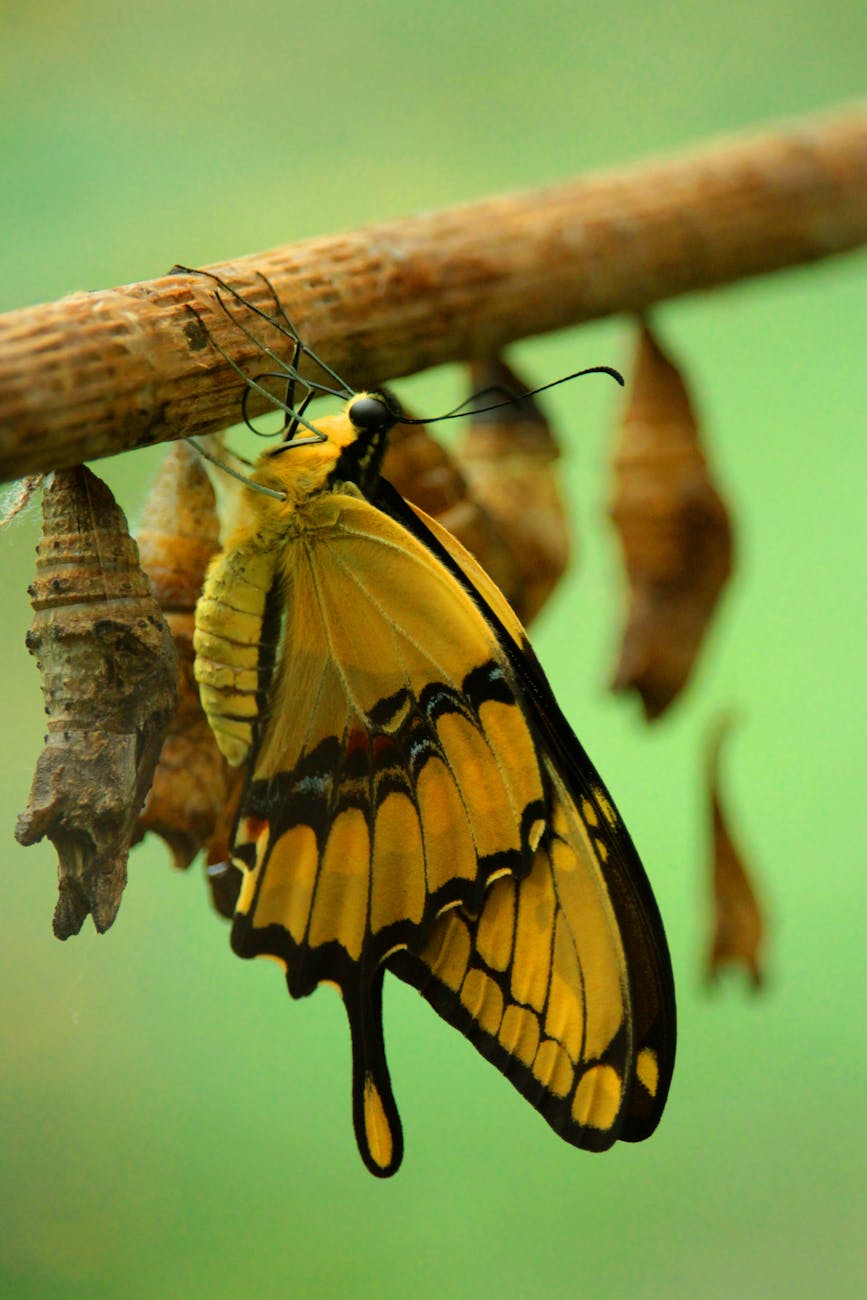The insect world is filled with incredible transformations, and one of the most fascinating phenomena is metamorphosis. This process allows insects to undergo distinct developmental changes as they grow from eggs to adults. Metamorphosis in insects is not just a biological marvel; it’s a survival strategy that has enabled insects to adapt and thrive in nearly every environment on Earth.

Table Of Contents
- Definition of metamorphosis
- Types Of metamorphosis
- Differences between complete and incomplete metamorphosis
- Revision question for students.
Metamorphosis In Insects
Definition: Metamorphosis is defined as the series of gradual changes of formed and shape of an insects from the fertilized egg (immature stage) to adult (mature stage of adulthood).
Certain organisms when they are hatched from eggs do not directly resemble the adult form. They therefore undergo series of changes in shape or form until the adult stage is reached. This process is what is called metamorphosis.
See Also
Types Of Metamorphosis
There are three types of metamorphosis. These are: No metamorphosis, complete and incomplete metamorphosis.
- No Metamorphosis
- Complete metamorphosis
- Incomplete metamorphosis
No Metamorphosis (Ametabolous Metamorphosis)
Definition: Some insects skip the dramatic transformations altogether. In ametabolous metamorphosis, insects hatch as smaller versions of adults. These juveniles grow in size through molting, shedding their exoskeleton as they mature. However, their body structure remains relatively unchanged throughout their life.
Key Characteristics:
- No wings at any stage
- Direct development without major structural changes.
Complete Metamorphosis (Holometabolous Metamorphosis)
Definition: Complete metamorphosis is the series of gradual changes which takes place in insects from fertilized egg to lava, then to pupa and finally to the adult stage.
Complete metamorphosis involves four stages which are:
Eggs – larva – pupa – adult.
Examples of insect which exhibit complete metamorphosis include:
- Housefly
- Mosquito
- Butterfly
- Bees
- Wasp
- Beetles.
Incomplete Metamorphosis (Hemimetabolous Metamorphosis)
Definition: Incomplete metamorphosis in insects is defined as the series of gradual changes in insects which take place from fertilized egg to nymph and finally to the adult stage.
Incomplete metamorphosis involves only three stages. These are:
Eggs – nymph – adult.
Differences between complete and incomplete metamorphosis In insects
| Feature | Complete Metamorphosis | Incomplete Metamorphosis |
|---|---|---|
| Number of Stages | Four stages of development are involved. | Three stages of development are involved. |
| Pupa Stage | Pupa (resting stage) is present. | Pupa (resting stage) is absent. |
| Resemblance to Adult | No resemblance between pupa and adult. | Nymph resembles the adult. |
| Nymph Stage | Nymph is absent. | Nymph is present. |
| Examples | Housefly, mosquito. | Cockroach, grasshopper. |
Conclusion On Metamorphosis In Insects
From the simplicity of ametabolous insects to the complex transformations of holometabolous species, metamorphosis is a testament to nature’s ingenuity. Each type of metamorphosis has its unique advantages and plays a crucial role in an insect’s survival and success. By understanding these life cycles, we can gain deeper insights into the fascinating world of insects and their role in ecosystems.
Have you observed any insect transformations in your backyard? Share your stories in the comments below—we’d love to hear about your encounters with the wonders of metamorphosis!
Revision Questions
- (a) What is the definition of metamorphosis? (b) State and explain the two types of metamorphosis in insects with examples.
- Differentiate between complete and incomplete metamorphosis.
